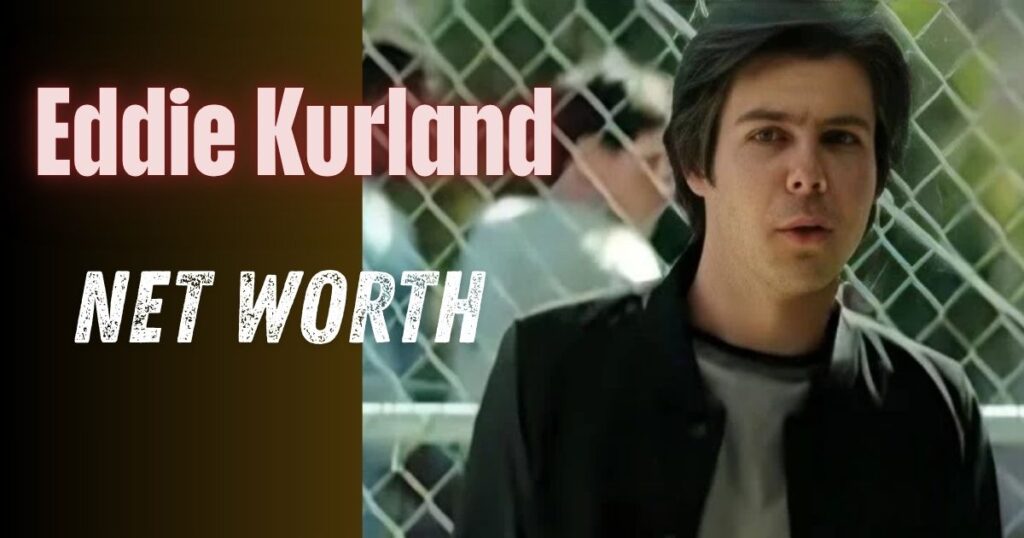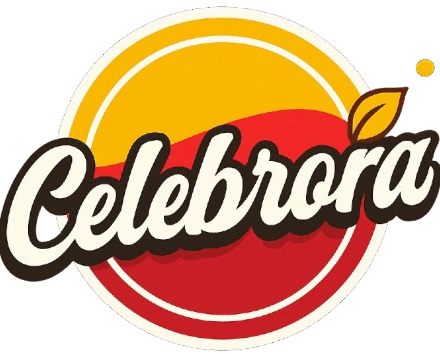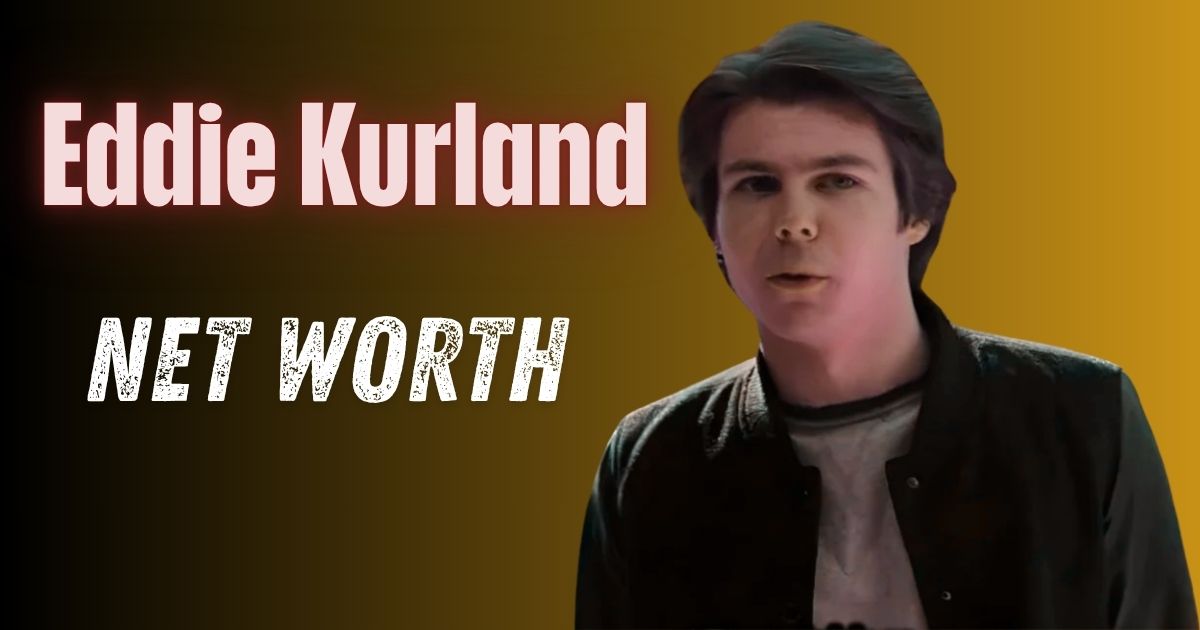Imagine the smoky boardrooms of 1970s Hollywood. Scripts stacked high. Tempers even higher. At the heart of this creative chaos stood Eddie Kurland, a man whose quiet brilliance helped shape The Godfather, one of the most influential movies in American cinema. While Francis Ford Coppola and Marlon Brando took the spotlight, Kurland stayed in the background—crafting, managing, and steering one of the most complex productions in film history.
In this deep dive, we’ll explore Kurland’s story—his early life in New York City, his climb through Paramount Pictures, his partnership with Al Ruddy, and his legacy as a Hollywood producer who changed cinema forever.
Quick Profile
| Category | Details |
| Full Name | Eddie Kurland |
| Known For | Associate Producer – The Godfather (1972) |
| Real or Fictional? | Real (associate producer); also portrayed as a fictional character in The Offer |
| Portrayed by (in The Offer) | Nicholas Petroccione |
| Famous Contribution | Helped secure the real horse head prop for the iconic “bed scene” |
| Role in The Godfather | Behind-the-scenes logistics, budgeting, production support |
| Affiliation | Worked with Al Ruddy (Producer of The Godfather) |
Eddie Kurland’s journey from a curious New York kid to a Hollywood filmmaker reads like a classic American success story. He didn’t chase fame; he built it for others. His fingerprints are on some of the most celebrated moments in cinematic history, especially the making of The Godfather.
What makes Kurland remarkable is his adaptability. In an industry driven by egos, he thrived quietly, balancing artistic vision and studio demands. Whether managing chaotic sets or negotiating with executives at Paramount Pictures, Kurland became the dependable center of creative storms.
Who Is Eddie Kurland?
Eddie Kurland wasn’t your typical Hollywood mogul. He didn’t flash wealth or chase headlines. Instead, he worked behind the camera, turning visionary ideas into real motion pictures. Born in 1938 in New York City, his passion for storytelling began early—long before anyone imagined he’d help create one of cinema’s greatest films.
He built his name in the film industry as a problem solver, known for turning impossible shoots into seamless productions. Colleagues described him as “the calm in the chaos.” His quiet confidence gave directors and producers room to dream.
Kurland’s title as associate producer on The Godfather might sound modest, but his contributions were massive. From finding perfect filming locations to managing tensions between Coppola, the cast, and the studio, he played the vital role of balancing artistry with logistics.
Early Life and Background
Growing up in New York City in the late 1930s, Kurland was surrounded by energy, diversity, and stories waiting to be told. The city was his film school—its streets alive with character and grit. Saturday matinees introduced him to the magic of storytelling through light and shadow.
After high school, he attended the University of Miami, where he earned a journalism degree. That training sharpened his communication skills and his eye for narrative—a crucial advantage in the world of film production. Journalism taught him to ask questions, stay curious, and chase truth—traits that later defined his Hollywood approach.
His early exposure to the post-war American film boom shaped his taste. The noir thrillers and gangster dramas of the time would eventually inspire his involvement in The Godfather, a movie that redefined the gangster genre for generations.
Personal Details
Eddie Kurland lived a grounded life despite his success in Hollywood. He married Maria Fernández, a Cuban-American artist who kept him anchored amid the whirlwind of studio life. Together, they raised two children—Isabella and Sebastian—both of whom occasionally explored creative pursuits.
He valued privacy and avoided the limelight. Friends often said Eddie preferred “fixing problems to posing for photos.” His home in Los Angeles became a refuge from the constant buzz of the movie world.
Colleagues recalled that even during production crises, Kurland’s calm presence steadied the crew. “He could talk a dog off a meat wagon,” one crew member joked, “and then get it to fetch a horse head for a scene.” That wit, warmth, and quiet authority earned him respect from Hollywood’s toughest personalities.
Professional Journey and Achievements
Kurland’s career journey is a blueprint for aspiring filmmakers. He started small—as a publicist at Paramount Pictures—but quickly showed a knack for understanding what makes stories resonate. His storytelling instincts and business sense made him a trusted figure in the film industry.
His achievements go beyond The Godfather. Through his Kurland Ruddy Productions partnership, he helped create classics like The Longest Yard (1974) and The First Deadly Sin (1980). Each film proved his versatility, shifting from mafia dramas to sports comedies and intense thrillers.
Kurland’s influence rippled through Hollywood. He taught younger producers the art of balancing creative freedom with financial discipline—a lesson still relevant in today’s streaming era.
First Steps in Hollywood
When Kurland joined Paramount Pictures, he was just another ambitious New Yorker chasing a dream. He started as a publicist, crafting press releases and marketing strategies for studio films like The Odd Couple (1968).
But behind every poster he designed, Kurland learned something vital about audience psychology—what moved people, what made them laugh, and what kept them coming back to theaters. Those lessons became the foundation for his later production work.
His friendship with Al Ruddy began at Paramount. The two shared the same creative fire. Ruddy brought big ideas, and Kurland made them work. That partnership soon became one of the most effective collaborations in Hollywood.
Eddie Kurland and The Godfather
When The Godfather entered development, it was far from the sure hit it’s known as today. Studios doubted it. The mafia hated it. Budgets ballooned. Yet Eddie Kurland believed in its vision. He stood by Francis Ford Coppola when others wanted him replaced.
Kurland’s role as associate producer was vital. He handled logistics—scheduling, location scouting, and solving on-set crises. He ensured that Coppola’s creative vision survived the studio politics of Paramount Pictures.
Without his organizational genius, the film might never have made it to theaters. His ability to calm egos, smooth negotiations, and find creative solutions kept production on track—and turned The Godfather into an American cinema classic.
Role in the Making of The Godfather
So what exactly did Eddie Kurland do? The title “associate producer” may sound vague, but on The Godfather, it meant doing everything necessary to keep the film alive.
He managed budget control, ensuring money flowed where it mattered most. He scouted authentic New York and Sicilian locations that gave the movie its iconic realism. He also served as the go-between for Coppola, the studio, and occasionally the real-life mafia—no easy task.
In a film famous for tension both on and off camera, Kurland’s calm leadership made all the difference. His understanding of both creative and commercial needs made him one of Hollywood’s most dependable behind-the-scenes producers.
Case Study: The Horse Head Scene
Few moments in film history are as unforgettable as The Godfather’s horse head scene. It was shocking, gruesome, and cinematic perfection. But getting it right required finesse—and courage.
Animal rights advocates raised concerns, and studios balked at the logistics. Eddie Kurland found the solution. He sourced a real horse head ethically from a dog food company, ensuring authenticity without unnecessary cruelty.
That single decision made movie history. The shock value cemented The Godfather’s status as a classic gangster film, proving Kurland’s unwavering commitment to realism.
“Kurland’s genius wasn’t loud—it was practical. He knew exactly what made a scene unforgettable.”
Related post: Maxx Morando Net Worth 2025: The Drummer Behind Miley’s Success Story
Partnership with Al Ruddy
The collaboration between Eddie Kurland and Al Ruddy became legendary. Together, they were the backbone of The Godfather’s success—Ruddy the dreamer, Kurland the doer.
Their synergy didn’t stop there. The two founded Kurland Ruddy Productions, which went on to produce The Longest Yard (1974), starring Burt Reynolds. The film’s mix of humor, grit, and rebellion mirrored the same storytelling DNA that made The Godfather iconic.
Even in Hollywood’s cutthroat world, their partnership thrived on trust and shared vision—a rare dynamic that left an indelible mark on 1970s Hollywood.
Contributions Beyond The Godfather
After The Godfather, Eddie Kurland continued shaping cinematic history. He produced The Longest Yard (1974), blending sports and comedy into an enduring hit. Then came The First Deadly Sin (1980), a dark thriller starring Frank Sinatra, showcasing Kurland’s dramatic range.
In 1990, he returned to the franchise that made him famous, co-producing The Godfather Part III. Despite mixed reviews, the film’s visual and thematic depth carried the same dedication to craft that defined Kurland’s career.
| Year | Film Title | Role |
| 1972 | The Godfather | Associate Producer |
| 1974 | The Longest Yard | Producer |
| 1980 | The First Deadly Sin | Producer |
| 1990 | The Godfather Part III | Co-Producer |
Career
Eddie Kurland’s career timeline reflects decades of excellence in film production. His style was meticulous yet flexible. He balanced artistry with practicality—a skill rare even today.
He never sought to direct; instead, he thrived on helping others tell their stories better. This selfless focus earned him quiet admiration among Hollywood insiders.
By the time The Godfather Part III hit theaters, Kurland had already built a reputation as a visionary producer, the kind of unsung hero who turns chaos into cinema.
Career Timeline
| Year | Project | Role | Notes |
| 1968 | The Odd Couple | Publicist | First major studio credit |
| 1972 | The Godfather | Associate Producer | Landmark mafia movie |
| 1974 | The Longest Yard | Producer | Sports comedy hit |
| 1980 | The First Deadly Sin | Producer | Sinatra’s final film role |
| 1990 | The Godfather Part III | Co-Producer | Return to the epic saga |
Eddie Kurland Net Worth

Though not a millionaire by today’s standards, Kurland’s estimated net worth of around $2 million reflects a steady, respected career. His wealth wasn’t just financial—it was artistic.
He invested in meaningful projects, not just profitable ones. Unlike many in the industry, he valued reputation over riches. His body of work stands as proof that passion and professionalism can outlast fame.
In Hollywood, where fortunes rise and fall overnight, Eddie Kurland’s legacy remains priceless.
Conclusion
Eddie Kurland’s life embodies the essence of American filmmaking—ambition, artistry, and persistence. From his early days in New York City to his role as associate producer of The Godfather, he proved that vision and discipline can create timeless art.
He didn’t crave headlines. He crafted them. Every scene that captivated audiences bore traces of his careful planning and deep storytelling sense.
Next time you rewatch The Godfather, look past the glitz and the legends. Behind every great film stands someone like Eddie Kurland—steady, visionary, and quietly extraordinary.
Willem Janssen is the admin of Celebrora, a blog dedicated to the world of celebrities. With a passion for entertainment and storytelling, he curates engaging content that brings readers closer to their favorite stars. Willem ensures Celebrora remains a trusted space for fresh updates, insights, and features about the lives of celebrities.

